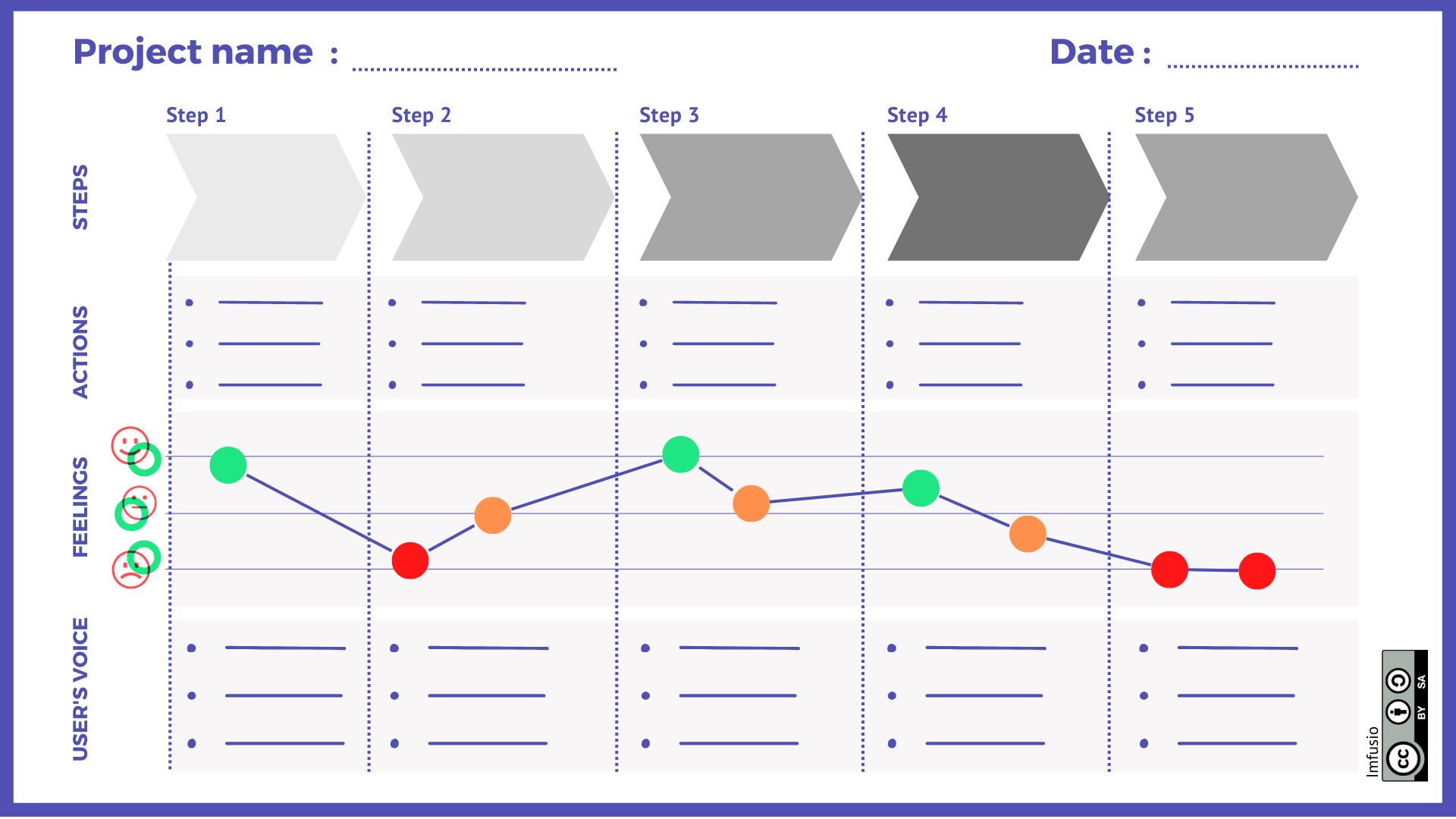To save colors and take care of the planet, print this text in shades of gray
User journey map
Put yourself in the user’s shoes to understand their needs
Pratique
Aims
Mapping out the user journey gives us a greater sense of empathy, projecting us into the beneficiary’s experience. This exercise involves gathering together all the information we need to better define the user’s needs and improve their experience.
Instructions
Time needed: 30 minutes to 2 hours
Materials:
- Blank user journey map
- Something to write with
- Red, orange and green felt-tip pens for visual learners
Constructing a user journey map is about telling a story.
Here’s how to read it:
- The horizontal axis represents the timeline and the different stages of the user journey
- The vertical axis shows the actions carried out by the user at each stage, the problems they encounter, the emotions they feel and what they or other people say.

Key steps
Present the user profile(s) whose shoes you want the participants to imagine themselves in:
- you can either ask the participants to define these profiles
- or you can provide them with profile sheets you have compiled previously.
Next split them into groups of 2 to 4, and ask them to try to imagine what the users’ experience is like:
- On the map, they can pin-point the beginning and the end of the journey, and all other stages in between. Ask them to limit it to 4 or 5 steps. (e.g.: getting ready to go out, shopping, payment, putting things away)
- For each stage of the journey, the participants must list the actions carried out by the user, trying to anticipate any problems or obstacles (e.g.: forgotten shopping list).
- In the “feelings” row, ask them to indicate the user’s emotions during the experience: Negative? Neutral? Positive? Next ask them to join up the dots.
The dots can be marked in different colours to represent different emotions (red, orange or green).
- Once the map is finished, the group has a visual representation of the issues and areas for improvement within the journey. They can then define where the user requires them to innovate or improve.
Tips and advice
Encourage the participants to prioritise action verbs when describing the different stages.
Example for the shopping preparation phase: make a list, take a basket, get in the car.